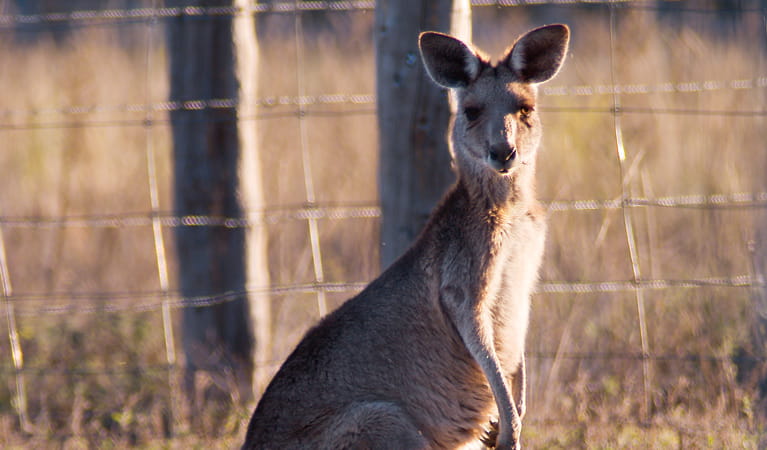Dthinna Dthinnawan National Park
Overview
Explore the remote Dthinna Dthinnawan National Park via mountain bike, bushwalking or 4WD touring. Learn about the park’s Aboriginal cultural heritage and local wildlife.
Read more about Dthinna Dthinnawan National Park
Dthinna Dthinnawan National Park gives you a feeling of having stepped back in time. It’s a place that’s so peaceful, it’s entirely likely you won’t see any other people here at all. In fact, the park is only open to the public when they’re staying at the heritage Inverary Homestead.
The flat or gently undulating landscape of Dthinna Dthinnawan is dominated by wide-open woodland dotted with scattered hills and billabongs. Take your time and enjoy exploring the tranquil surroundings, whether it be travelling across the wide-open plains, which are full of wildlife, in a 4WD, or following some of the rugged trails by foot or on a mountain bike. Birdwatching, spotlighting, walking, and 4WD touring are all popular pastimes in this area.
Travelling the long straight dirt roads enveloped by trees, you’re likely to encounter kangaroos darting across the road and sometimes feeding with emus on the open plains during dawn and dusk. The park also provides habitat for a number of threatened bat species.
Local alerts
For the latest updates on fires, closures and other alerts in this area, see https://www.nationalparks.nsw.gov.au/visit-a-park/parks/dthinna-dthinnawan-national-park/local-alerts
Contact
- in the Country NSW region
Dthinna Dthinnawan National Park is always open but may have to close at times due to poor weather or fire danger.
-
-
Narrabri office
02 6792 7300
Contact hours: Monday to Friday, 8.30am to 4.30pm. - Level 1, 100 Maitland Street, Narrabri NSW 2390. Accessible via Dewhurst Street.
-
Email: npws.barwon@environment.nsw.gov.au
-
Narrabri office
Visitor info
All the practical information you need to know about Dthinna Dthinnawan National Park.
Map
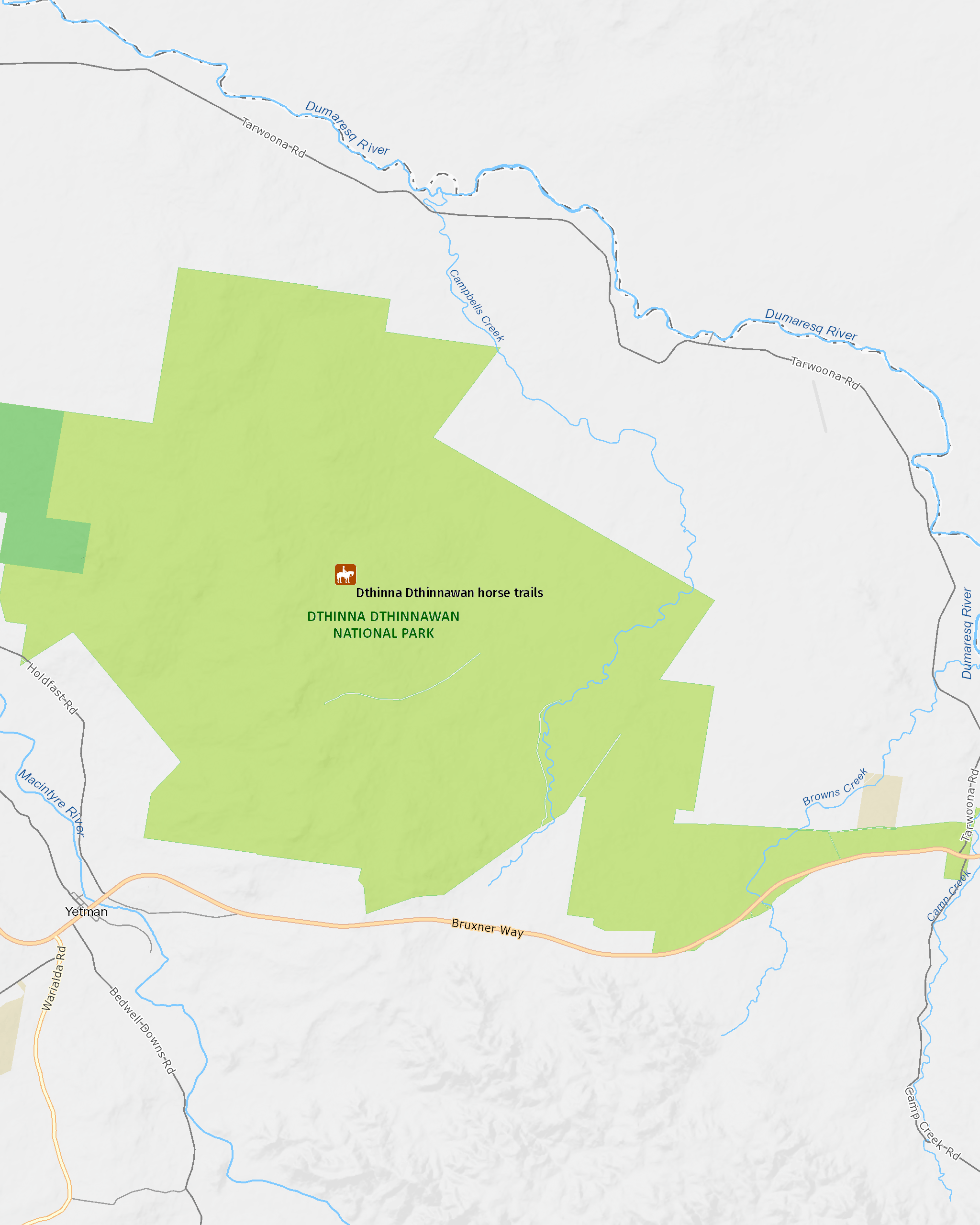
Map legend

Getting there and parking
Get driving directions
From Tenterfield:
- Follow Rouse Street/New England Highway north out of Tenterfield.
- After about 4km, you’ll turn left at Bruxner Highway and follow west for approximately 100km/1hr to Bonshaw (last petrol station/shop)
- From Bonshaw, continue west for 40km and turn right at the cream and pink house-shaped ‘Inverary Homestead’ mailbox. Directly opposite the mailbox, just off the highway, is the private property sign ‘Trigamon North’.
- Once you reach the locked gate at the park entrance, it is approximately 4km to Inverary Homestead.
From the west:
- Dthinna Dthinnawan’s mailbox is located approximately 12km from Yetman along Bruxner Highway on the left
Parking
- Dthinna Dthinnawan horse riding trails See on map
By bike
Check out the Bicycle information for NSW website for more information.
By public transport
Dthinna Dthinnawan National Park is not accessible by public transport.
Best times to visit
There are lots of great things waiting for you in Dthinna Dthinnawan National Park. Here are some of the highlights.
Autumn
With the weather slightly cooler, its a good time to work up a sweat exploring the parks many trails on mountain bike or on foot.
Spring
Between the warmer months of September and March, spectacular wildflower displays light up the bush.
Summer
A terrific time to tour the park from the comfort of a 4WD and enjoy seeing all the amazing wildlife it has to offer.
Weather, temperature and rainfall
Summer temperature
Average
18°C and 32°C
Highest recorded
41.2°C
Winter temperature
Average
3°C and 18°C
Lowest recorded
-6.3°C
Rainfall
Wettest month
January
Driest month
June
The area’s highest recorded rainfall in one day
160mm
Facilities
Maps and downloads
Prohibited
Pets
Pets and domestic animals (other than certified assistance animals) are not permitted. Find out which regional parks allow dog walking and see the pets in parks policy for more information.
Smoking
NSW national parks are no smoking areas.
Nearby towns
Warialda (91 km)
Warialda is surrounded by picturesque bushland, making it an ideal location for bushwalking and relaxing in natural surrounds. There are numerous places to picnic, and Cranky Rock Nature Reserve is a popular spot for fossicking, birdwatching and exploring. The area also supports a large variety of wildflowers.
Inverell (153 km)
Go fossicking for sapphires and other gems at several places around the city. Grab a map of local fossicking sites from the visitor information centre and try your luck.
Tenterfield (166 km)
Sir Henry Parkes delivered his famous "birth of our nation" speech in the Tenterfield School of Arts in 1889. His rousing speech is credited with being the decisive moment that set the country on its path toward Federation in 1901.
Learn more
Dthinna Dthinnawan National Park is a special place. Here are just some of the reasons why:
Aboriginal cultural heritage
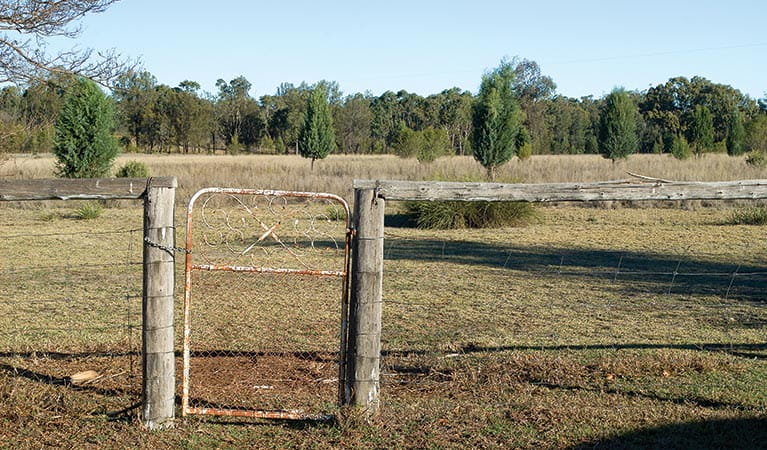
Dthinna Dthinnawan (pronounced Dinna Dinna-wah) means ‘place for emu footprint.’ The park contains a wide range of Aboriginal sites that provide evidence of traditional early Aboriginal culture and use. The area had abundant food and materials and provided year-round resources for the Gamilroi people.
Wild and varied native plant life
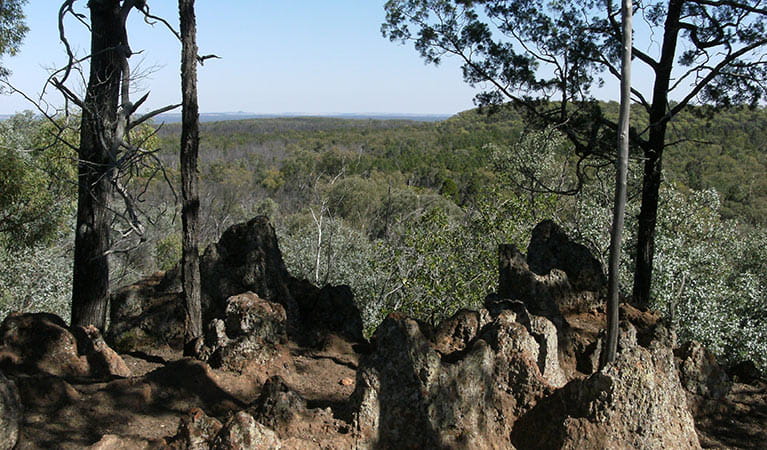
Eleven vegetation communities have been identified here, two of which are endangered – the carabeen and grassy white box woodlands. Much of the reserve is dominated by towering black cypress, white cypress, smoothed barked apple and dirty gum trees. In addition to these, the Yelarbon Spinifex community here has been recommended for listing as an endangered community.
Encounter endangered animals
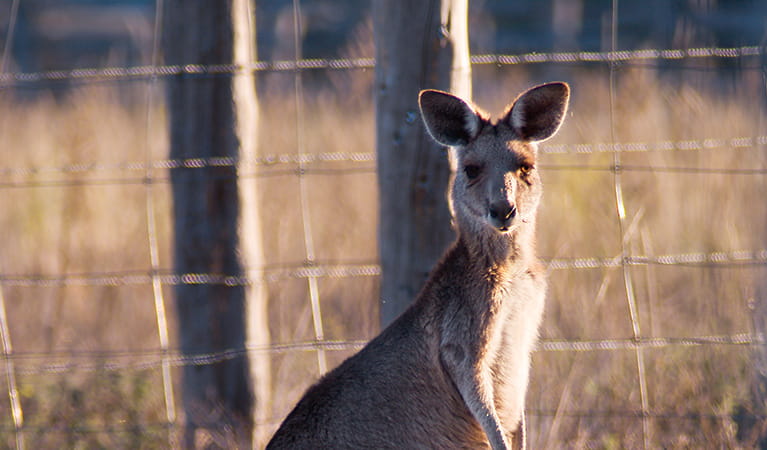
A number of threatened species have been sighted here, including the black-striped wallaby, zig-zag velvet gecko, squatter pigeon and delicate mouse. Not to mention, koalas, squirrel gliders and glossy black cockatoos. The park is one of the best areas for long-term conservation of a number of threatened bat species that make their home there. These include the eastern free-tail bat, little pied bat, greater long-eared bat, yellow-bellied sheathtail-bat, and the hairy-nosed mormopterus.
Education resources (1)
What we're doing
Dthinna Dthinnawan National Park has management strategies in place to protect and conserve the values of this park. Visit the OEH website for detailed park and fire management documents.

